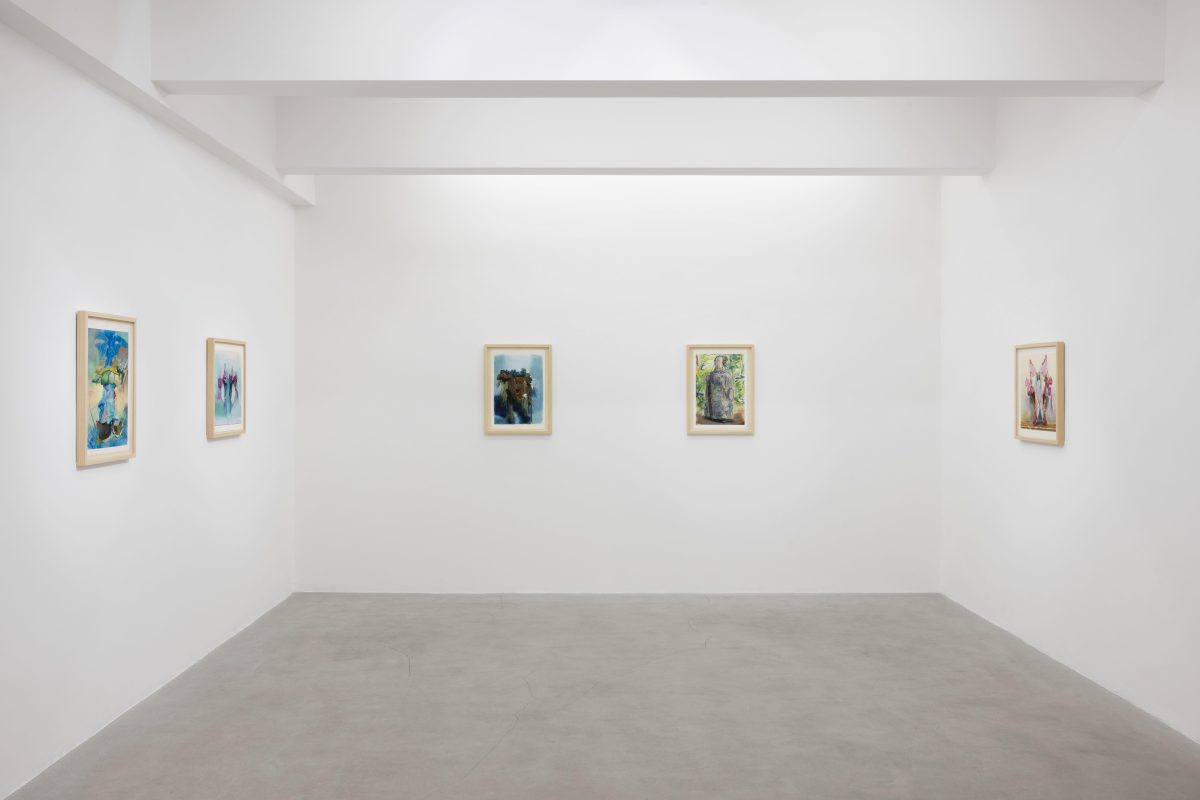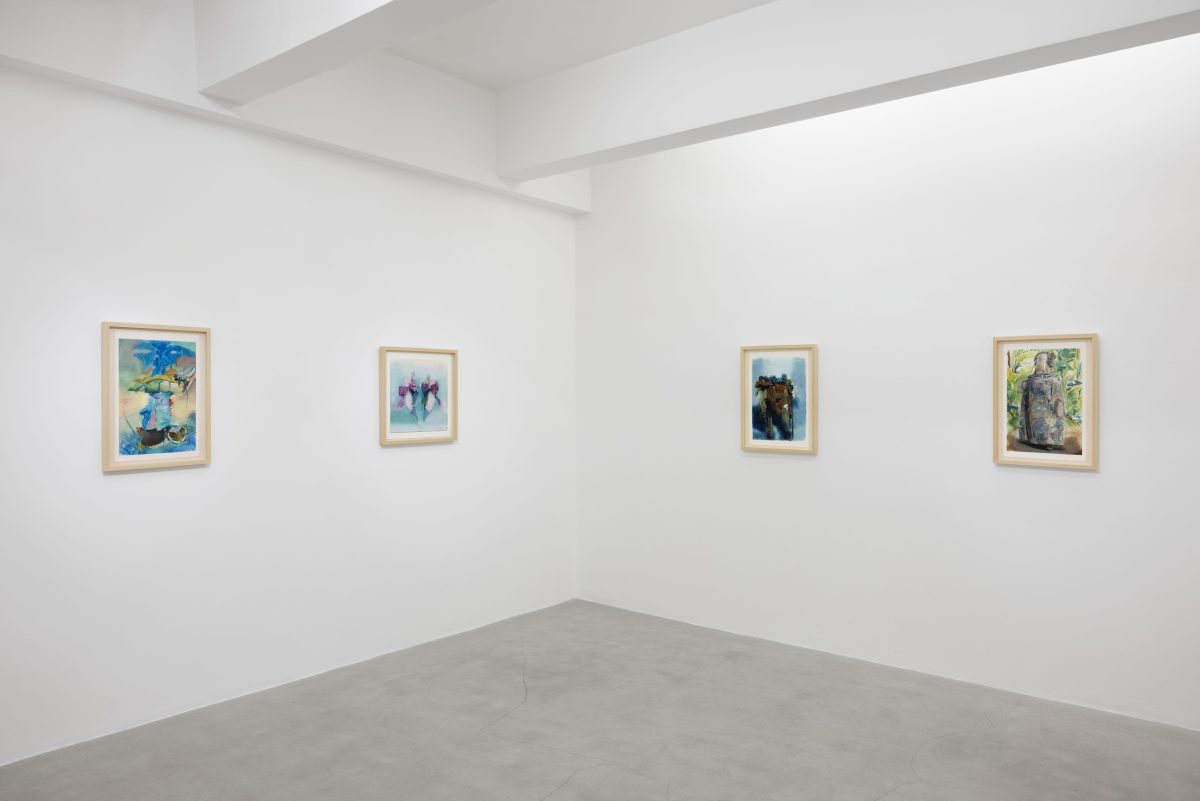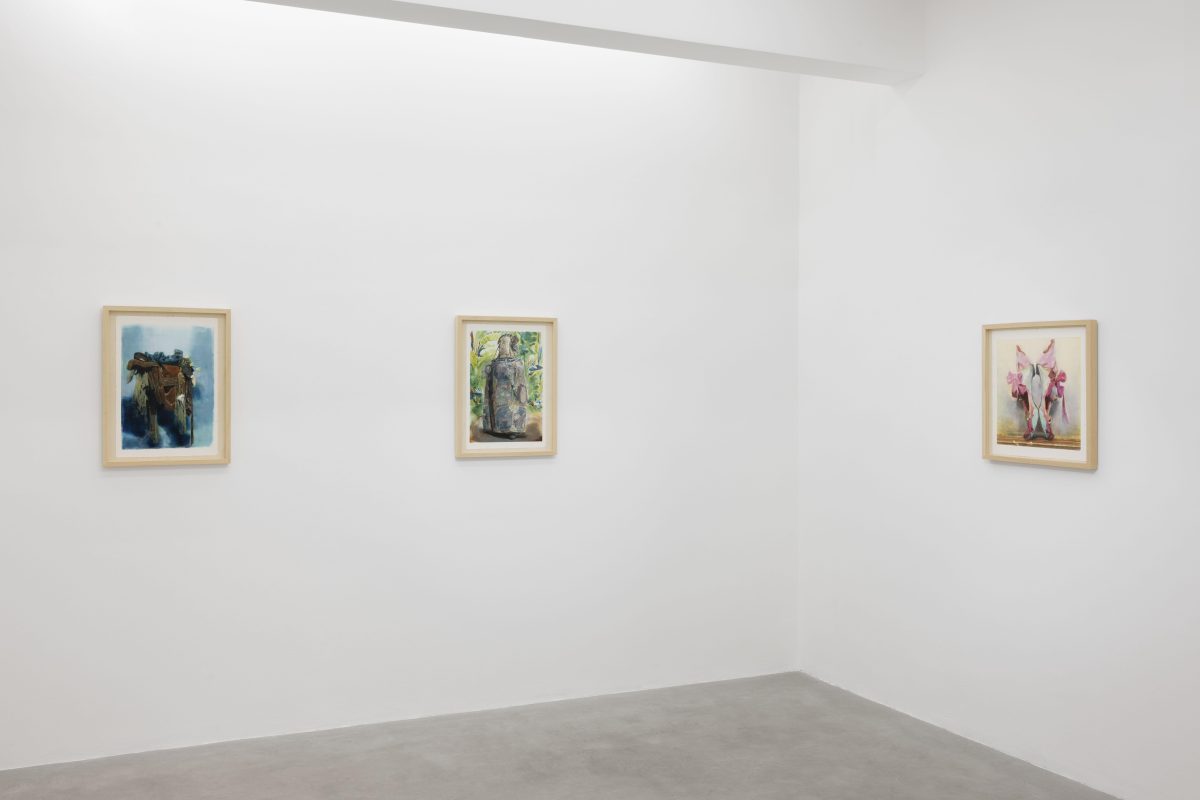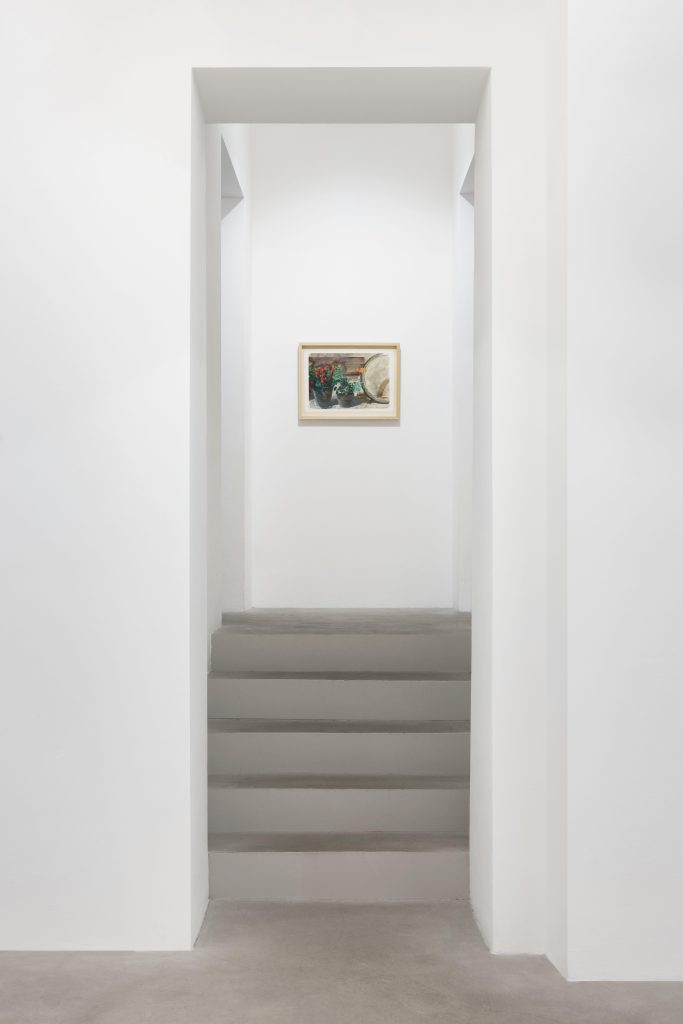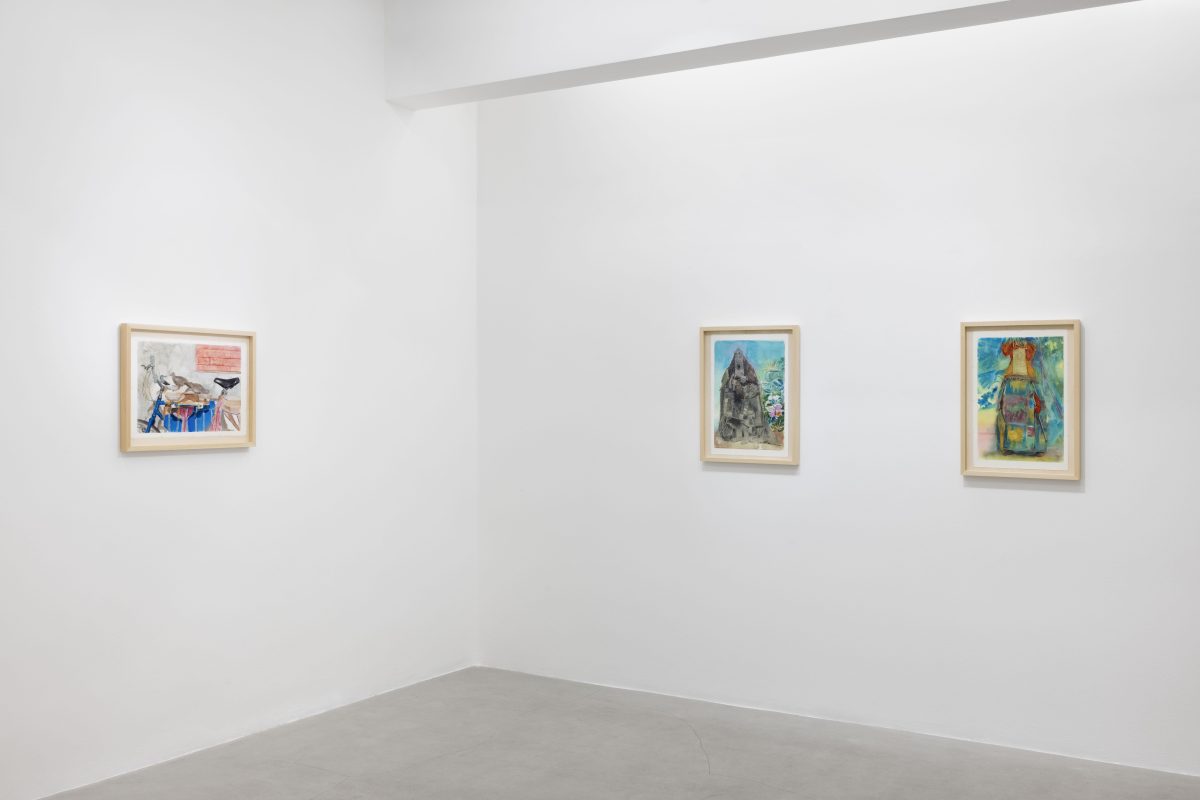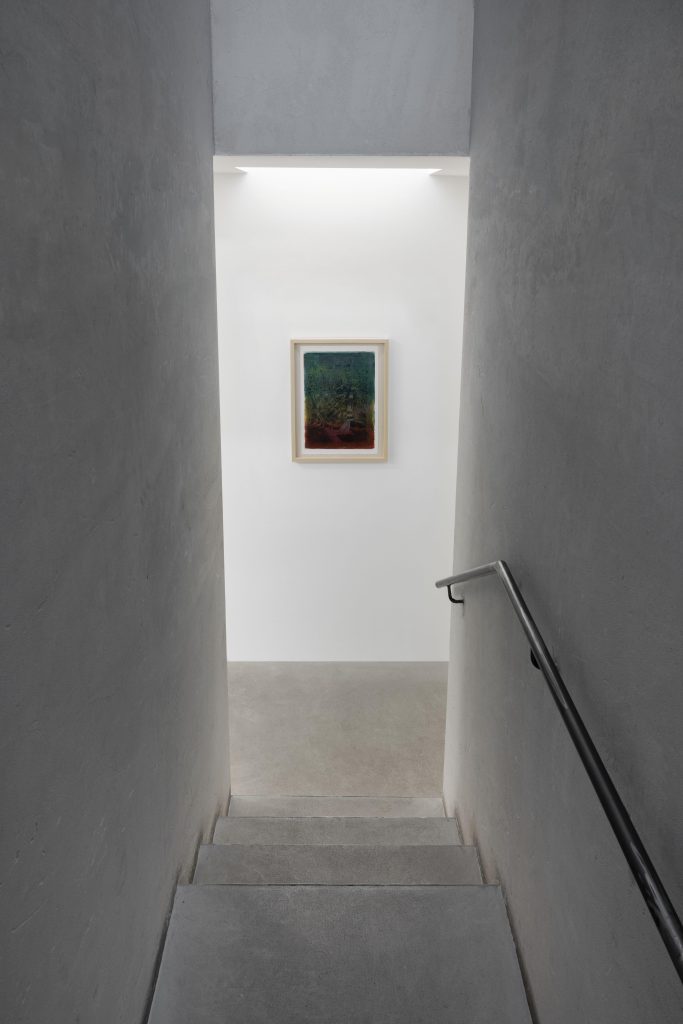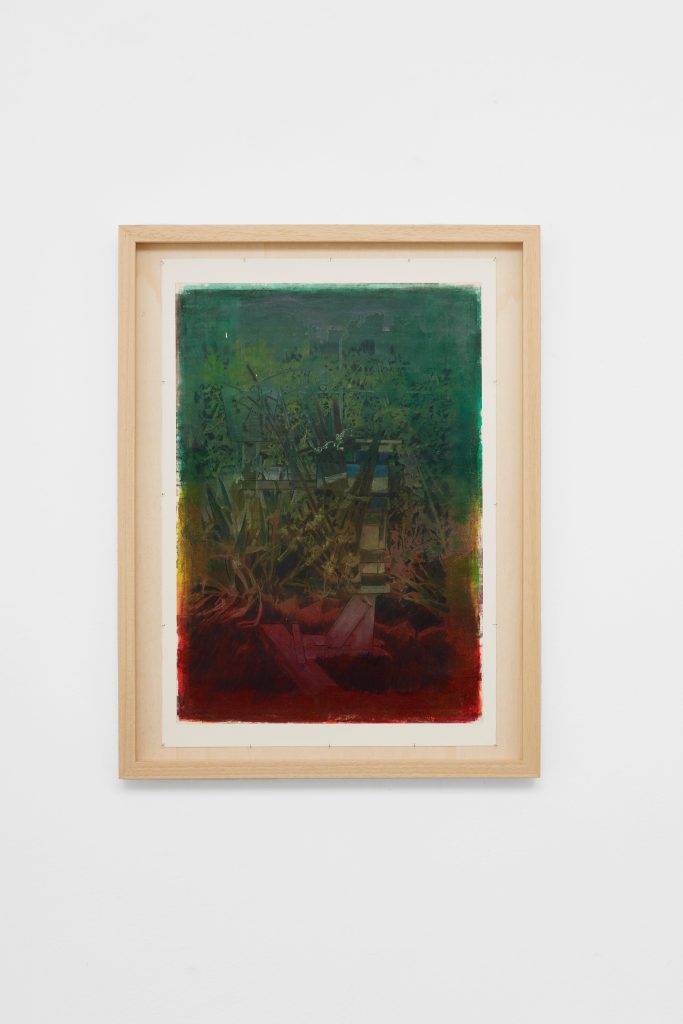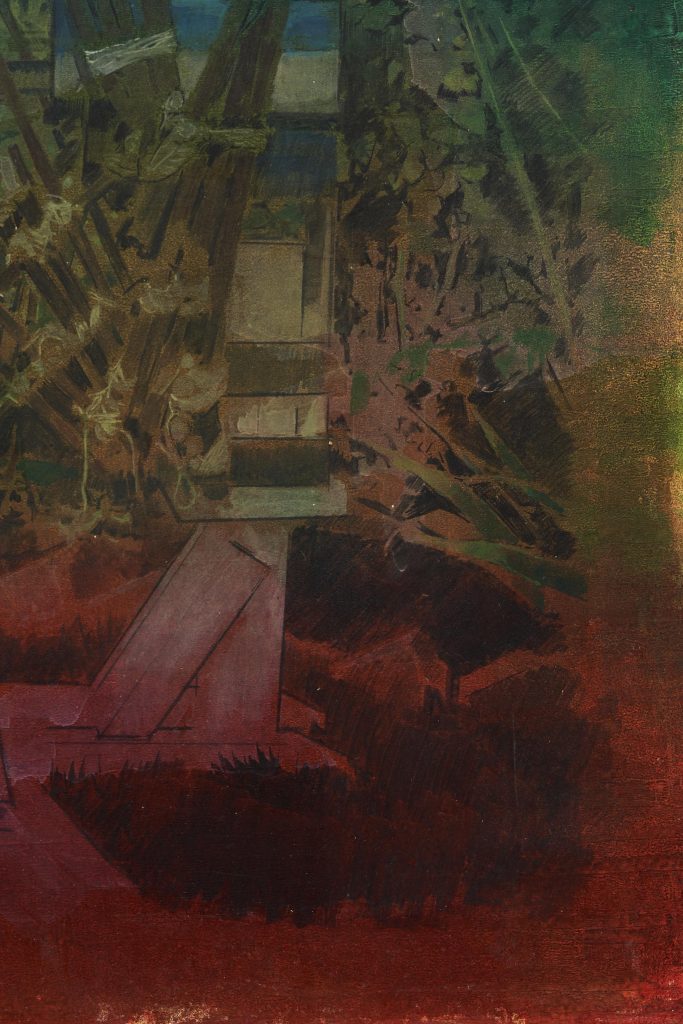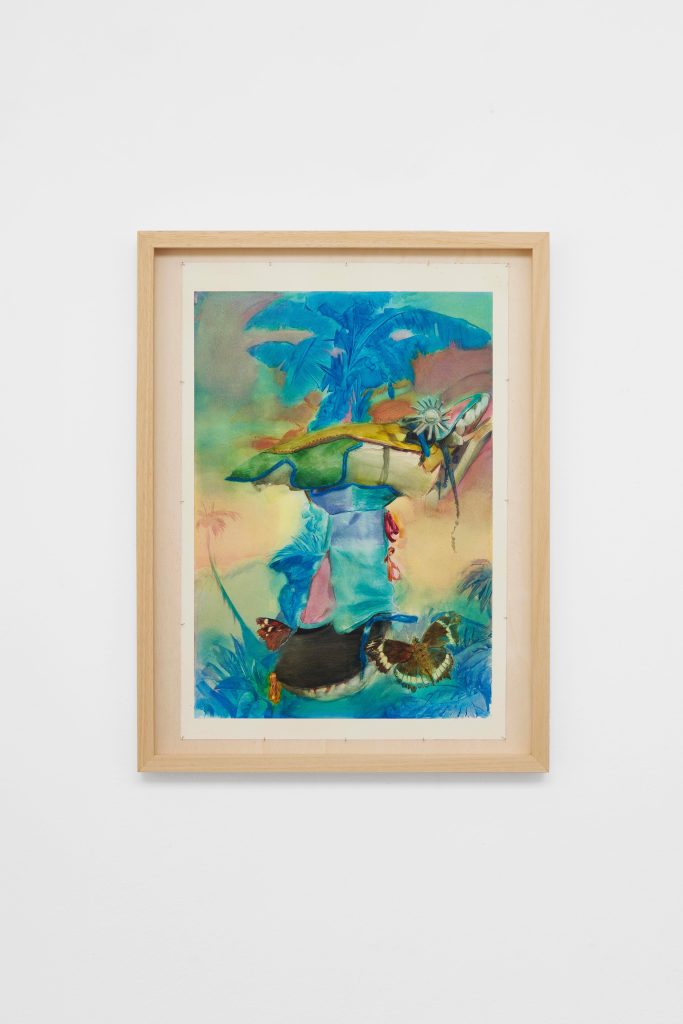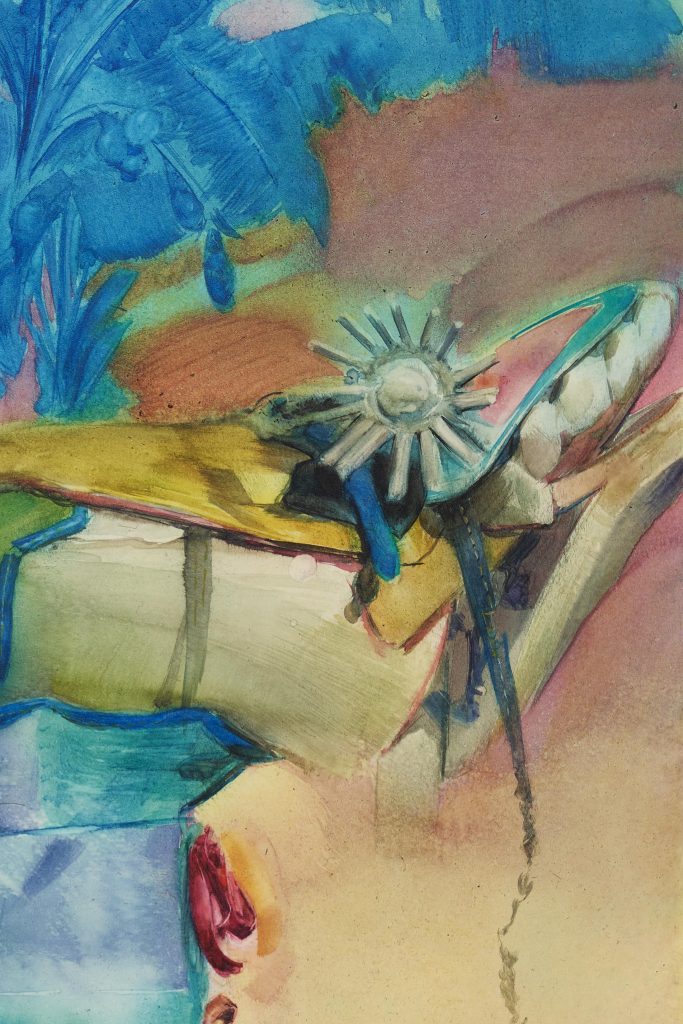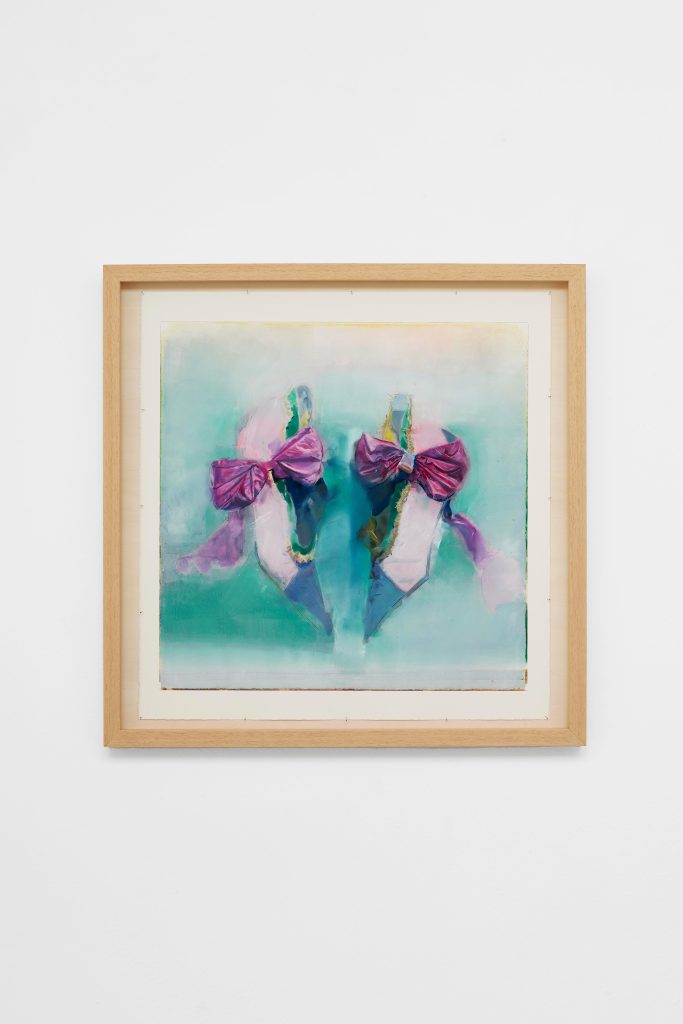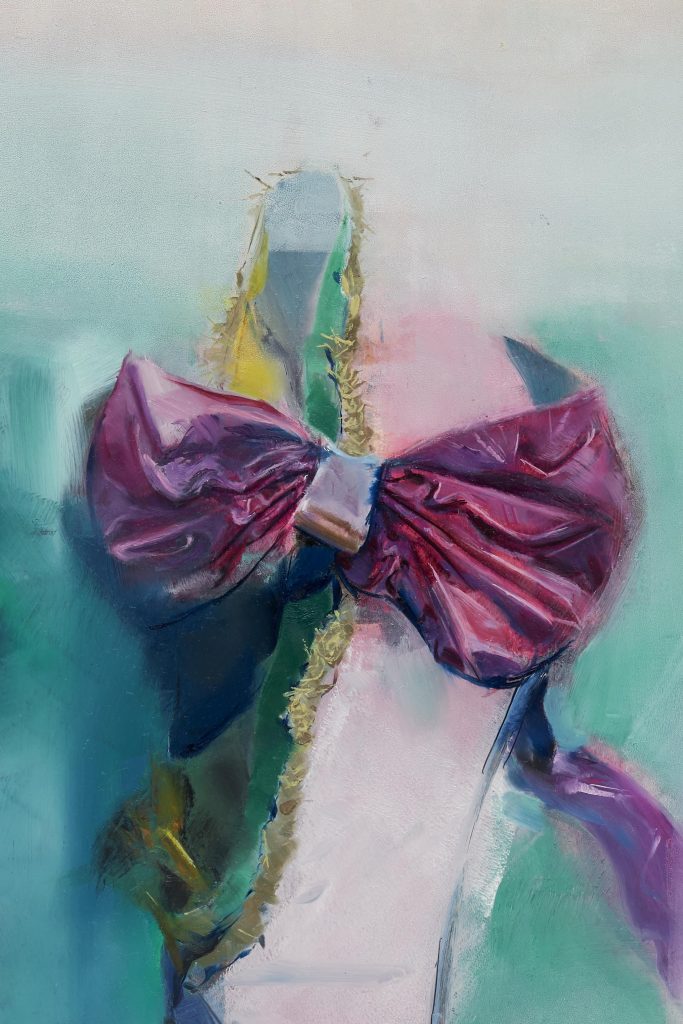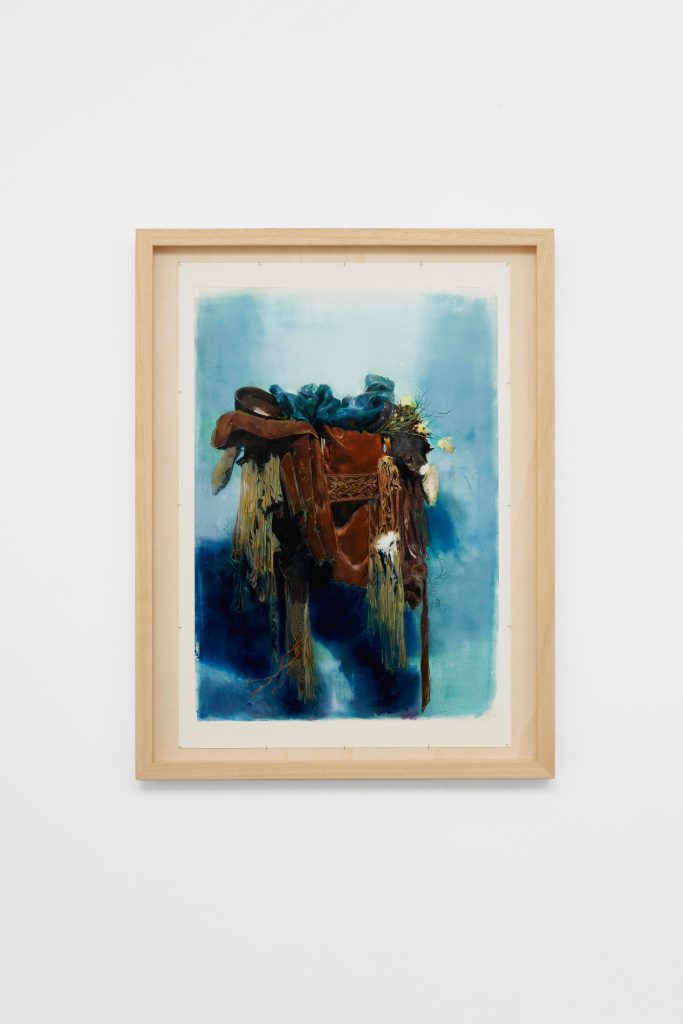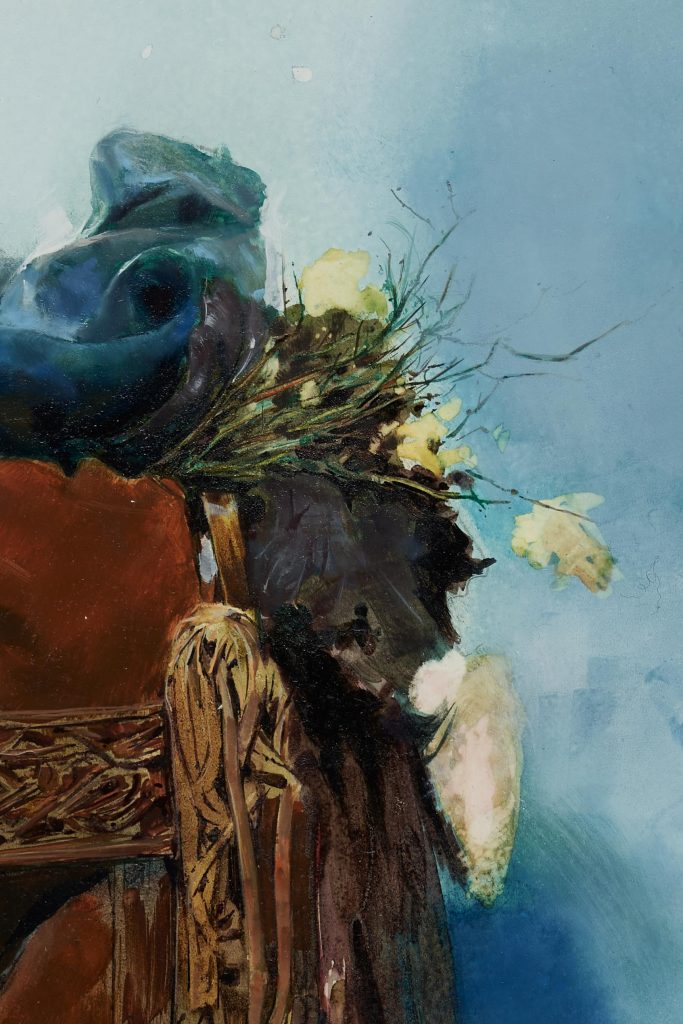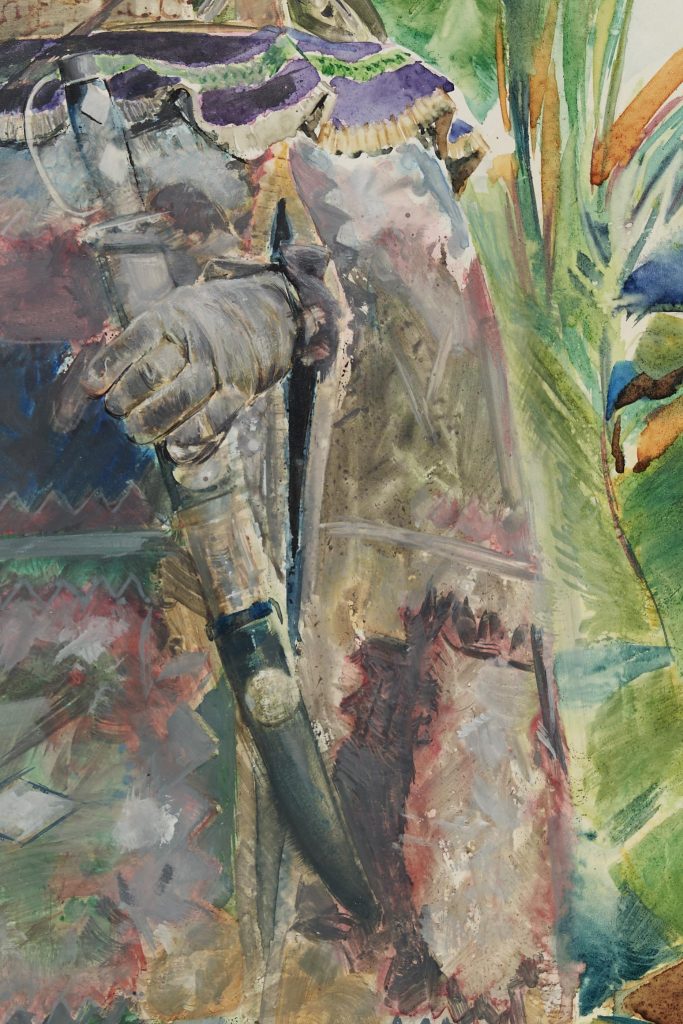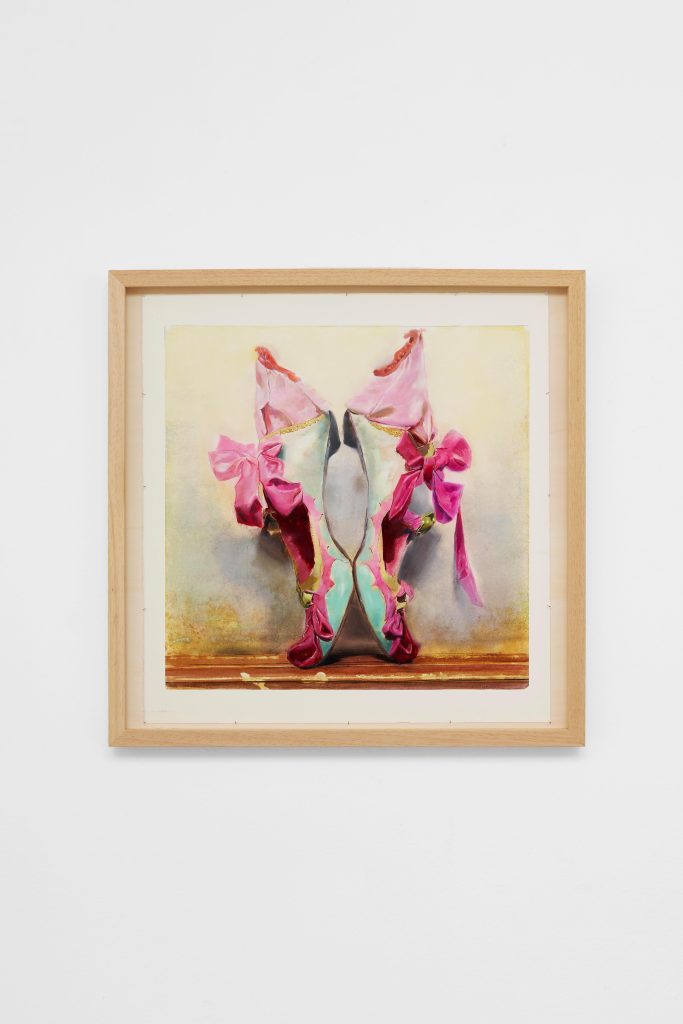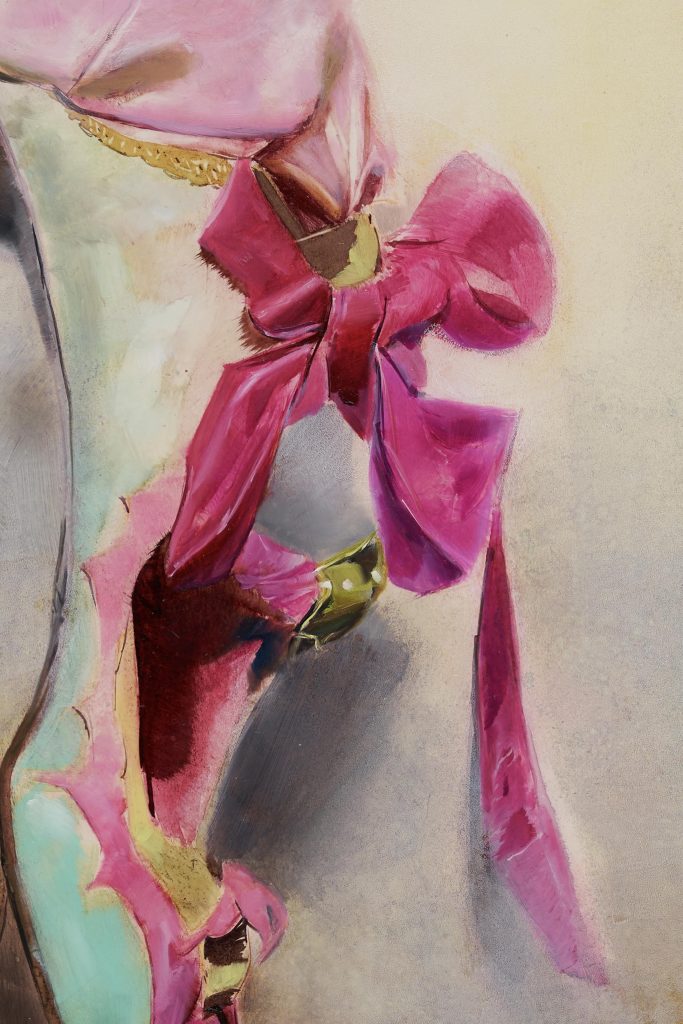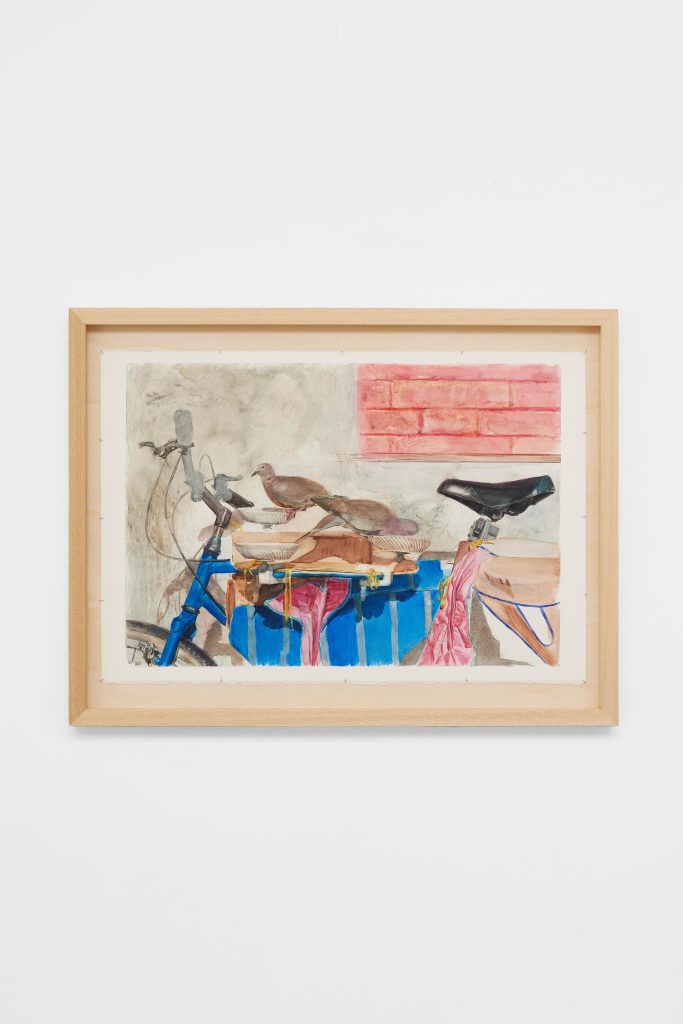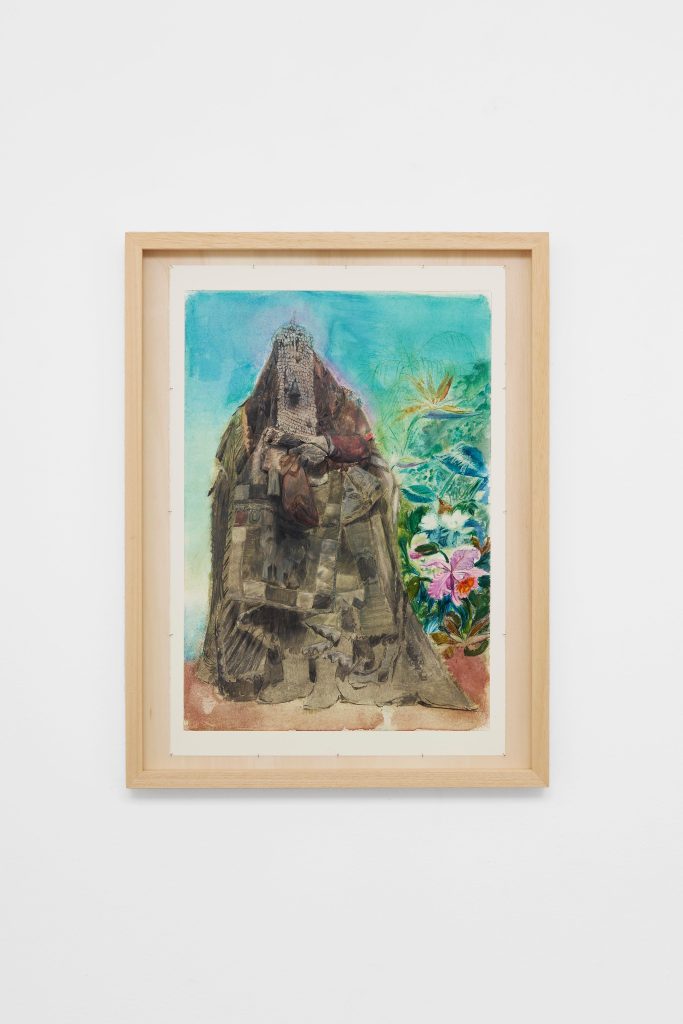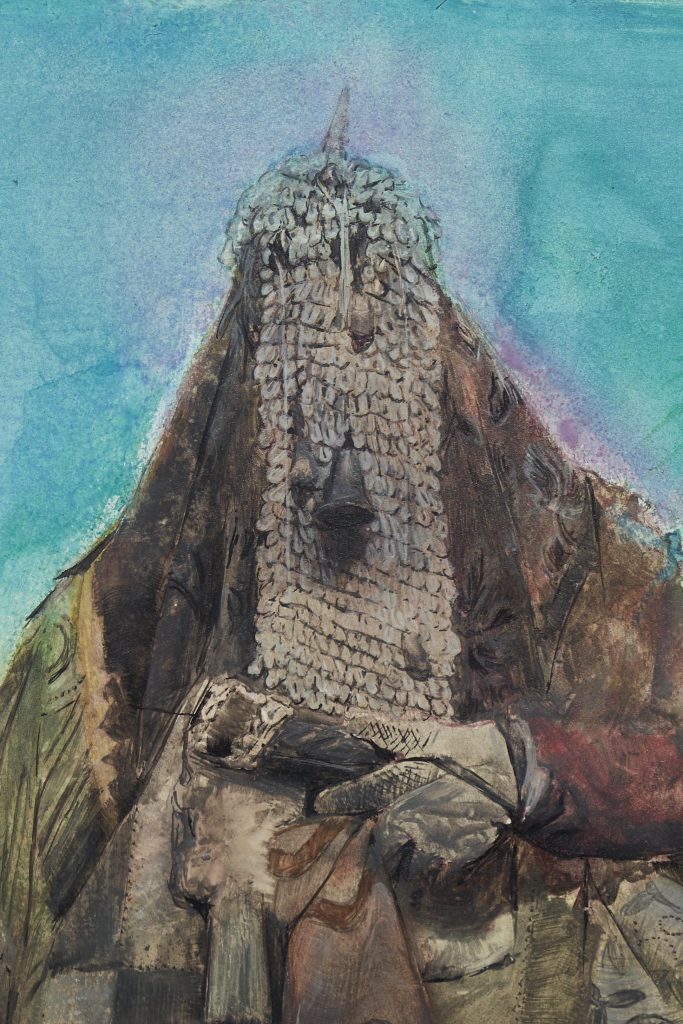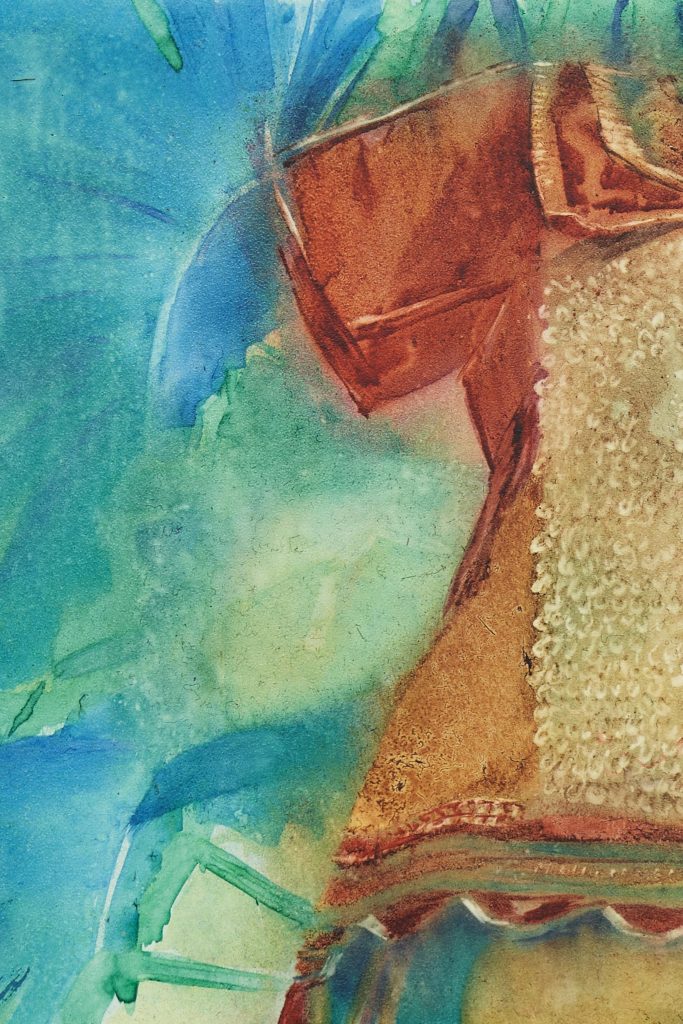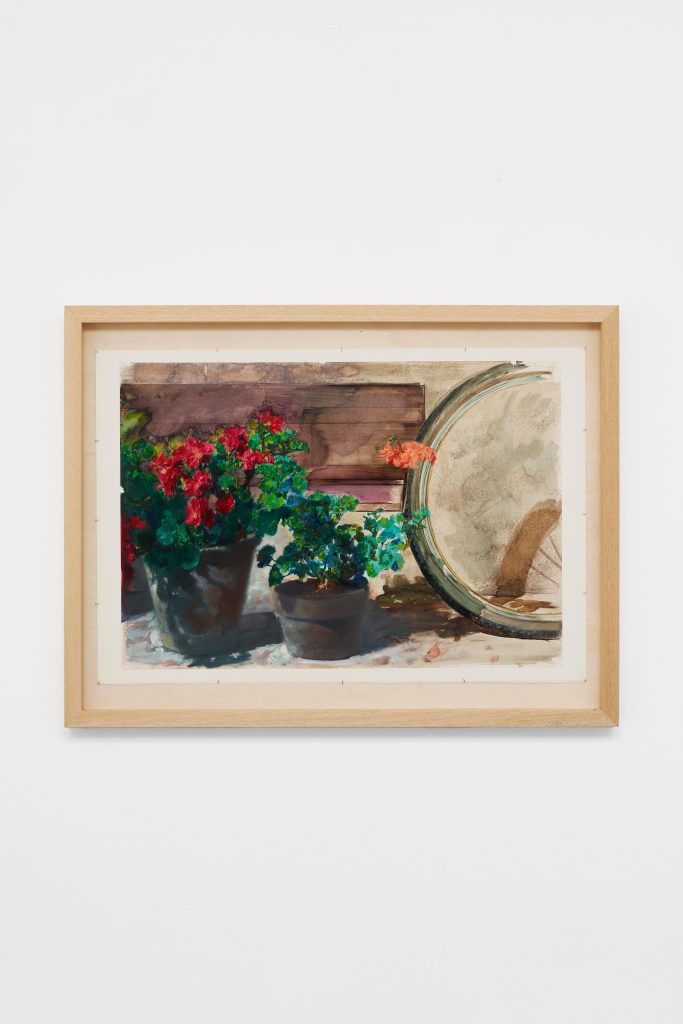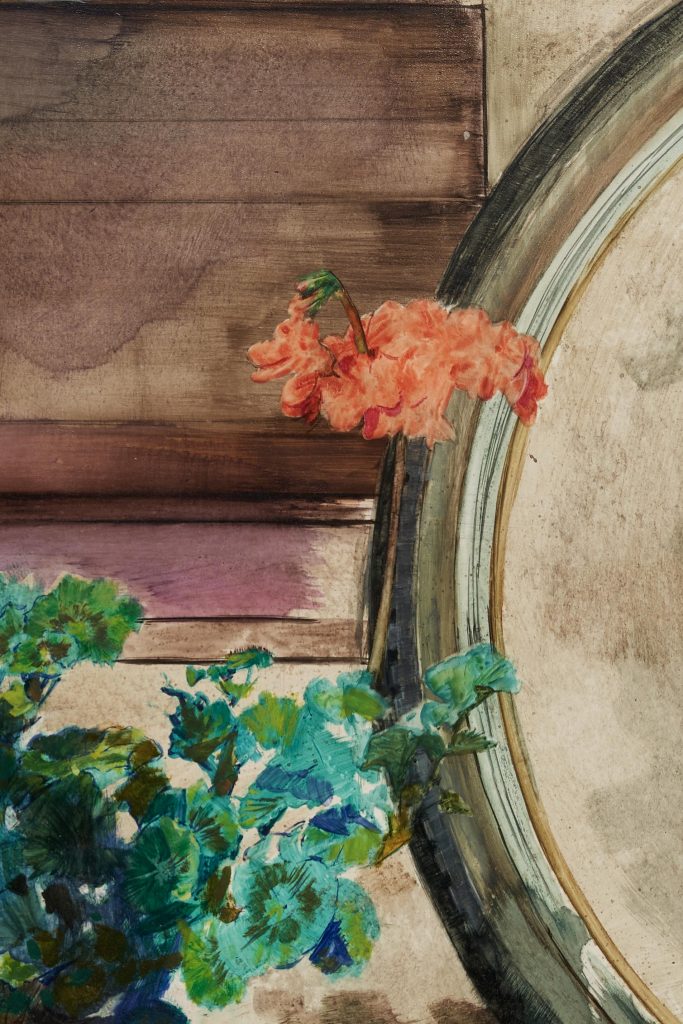
- This event has passed.
kaufmann repetto is delighted to present Didgeridoo, the sixth solo exhibition to be staged by Pierpaolo Campanini with the gallery.
The didgeridoo is a wind instrument that has been used for millennia by the Aboriginal peoples of Australia. Made out of a eucalyptus branch and as much as three meters or more in length, it is played by the technique known as circular breathing, which makes it possible to produce a drone or monophonic note without interrupting the flow of air. Chosen by the artist as the title of the exhibition, and at the same time the title given to each of the twelve works on show, the reference to the didgeridoo becomes a semantic device and a key to the entire project.
In his new paintings the dimension of the object, in the past based on assemblages constructed in the studio, derives from the intricate interaction between images and 3D models created by the artist and their processing by means of artificial intelligence programs. The starting point is provided by basic forms which, uploaded into an AI generator, give rise to a range of different possible combinations. Intervening in his turn in the linkages of the algorithm during the process, and feeding it with specific elements in which he is interested, Campanini obtains ever-changing mixtures, generating a flow of potential forms and images. The process of negotiation between the artist and the software, comparable to a sequence of inhalations and exhalations, is what reminds him of the circular breathing used to play the didgeridoo.
Denying the technological means any authorship, however, Campanini deliberately manipulates the stream of images produced by the algorithm. He induces the program to come up with “wrong” and dystopian results, elaborates them in preliminary drawings and then uses them as the source material for his seductive paintings with their lacquered effect. In the exhibition he presents a number of evolutions of motifs recurrent in his practice, such as the mise-en-scène of ballet shoes in gaudy colors, decorated with ribbons and embellished with gilded details, suspended as if they were dancing en pointe; and again, the study of the wall of a house in the countryside and glimpses of a luxuriant and quivering vegetation. Other paintings center on strange figures clad in eccentric armor of a tribal flavor, while yet others are complex and enigmatic compositional contrivances, like the sumptuous saddle suspended against a sky blue background, or the surreal heap of shoes at the center of a still life in bright shades of color. Wavering between domestic atmospheres and dreamlike visions, Campanini’s pictures are able to stir a rather perverse and childish desire for an unknown and autonomous visual territory. The deliberate, erratic precarity of subjects and compositions fascinates us, and brings us back to the didgeridoo, whose flow of sound is not only produced with the breath but also by pronouncing words and making noises. As the artist puts it: “We could imagine what appears on the plane of the painting as a deposit with ragged edges, like the detritus from a tide of ideas that ebbs and flows.”
kaufmann repetto è lieta di presentare Didgeridoo, la sesta mostra personale di Pierpaolo Campanini con la galleria.
Il didgeridoo è uno strumento a fiato utilizzato da millenni dalle popolazioni aborigene australiane. Ricavato da un ramo di eucalipto e lungo fino a oltre tre metri, viene suonato con la tecnica del respiro circolare che permette di emettere una nota monofonica senza interrompere il flusso d’aria. Scelto dall’artista come titolo dell’esposizione, e allo stesso tempo anche come titolo attribuito a ognuna delle dieci opere presentate, il riferimento al didgeridoo diventa dispositivo semantico e chiave di lettura per l’intero progetto.
Nei nuovi dipinti la dimensione oggettuale, in passato basata su degli assemblages costruiti nello studio, risulta dall’intricata interazione tra immagini e modelli 3D creati dall’artista e la loro elaborazione mediante programmi di intelligenza artificiale. Il punto di partenza è rappresentato da forme-base le quali, caricate all’interno di un generatore di AI, danno vita a diverse combinazioni possibili. Intervenendo a sua volta nelle maglie dell’algoritmo durante il processo, e nutrendolo con specifici elementi di suo interesse, Campanini ottiene sempre nuove mescolanze, generando un flusso di potenziali forme e immagini. Il processo di negoziazione tra l’artista e il software, paragonabile a una sequenza di inspirazione ed espirazione, rimanda appunto al respiro circolare usato per suonare il didgeridoo.
Negando però ogni autorevolezza al mezzo tecnologico, Campanini manipola intenzionalmente il torrente di immagini prodotto dall’algoritmo. Induce il programma a fornire risultati ‘sbagliati’ e distopici, li elabora in disegni preliminari per poi farli confluire nella sua seducente pittura dall’effetto patinato. In mostra presenta alcune evoluzioni di motivi ricorrenti nella sua pratica, come la mise-en-scène delle scarpette da ballerina dai colori sgargianti, infiocchettate e impreziosite da dettagli dorati, sospese come in una danza a punta; e ancora, lo studio del muro di una casa di campagna e gli squarci di una lussureggiante vegetazione palpitante. Altri dipinti hanno al centro strane figure avvolte da eccentriche armature dal sapore tribale, mentre altri ancora sono complessi ed enigmatici congegni compositivi, come la sontuosa sella sospesa su uno sfondo azzurro, o il surreale ammasso di calzature al centro di una natura morta dai toni cromatici accesi. Oscillando tra atmosfere domestiche e visioni oniriche, i quadri di Campanini sono capaci di suscitare il desiderio un po’ perverso e infantile verso un territorio visuale ignoto ed autarchico. La deliberata, erratica precarietà di soggetti e composizioni ci ammaglia, e ci riporta nuovamente al didgeridoo, il cui flusso sonoro non si genera soltanto con il fiato ma anche pronunciando parole, suoni, rumori. Dice l’artista: “Potremmo immaginare ciò che appare sul piano pittorico come un deposito dai bordi frastagliati, come detriti da una marea-idea che inonda e si ritira”.

